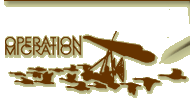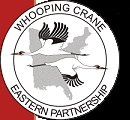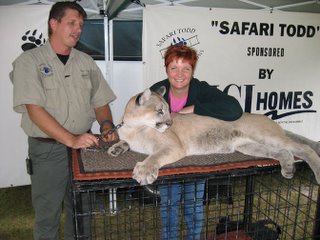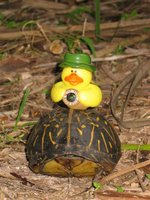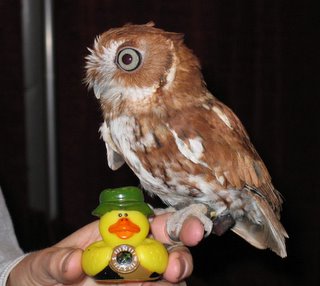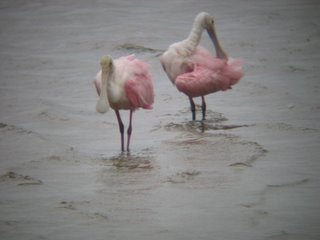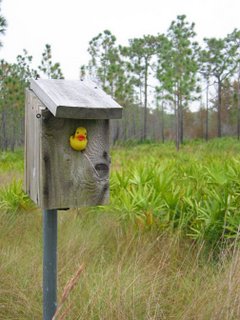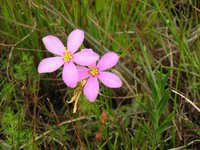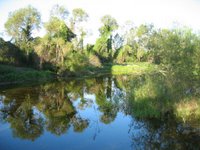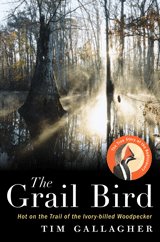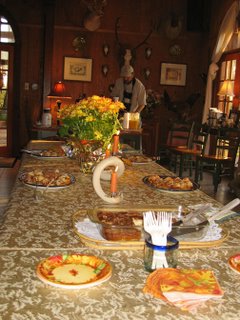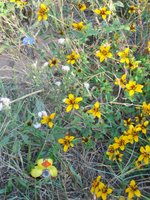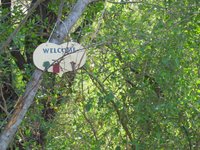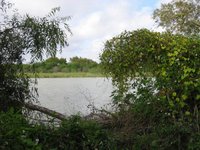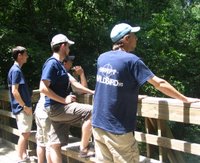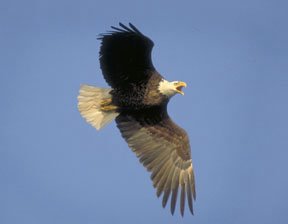Anzalduas County Park beckoned to us as the bus left the municipal auditorium Friday at 6 a.m. At the front of the bus were leaders Victor Emanuel, Barry Lyon, Mark Scheuerman and Ben Lizdas.
Before reaching the park, we made an unscheduled stop to look for a
Burrowing Owl in fields on the other side of a levee. The owl obliged by appearing on a concrete culvert and showing us its fantastic yellow eyes.
Other birds obliged by popping up on the nearby telephone poles and wires, flying above the fields or perching on posts. We observed
Northern Harriers,
Eastern Phoebe,
Couch's Kingbird,
Golden-fronted Woodpecker,
American Kestrel,
Great Kiskadee and
Loggerhead Shrike. For an unscheduled stop, the location offered a wonderful number of species. It was awesome!

Then we drove to
Anzalduas County Park and saw lots of birds and bugs. Within 20 minutes of leaving the bus, we saw Green Jays, Golden-fronted Woodpeckers,
Black-throated Green Warbler (beautiful!) and a
Ladder-backed Woodpecker while it fed. Then we stalked a
Northern Beardless-Tyrannulet for about 15 minutes and finally got good looks at the elusive flycatcher, considered rare in Texas.

After following the road over a levee, we walked beside a
leafcutter ant colony that really impressed Victor. He said the "wonderful" colony is the largest that he's seen in the United States. Victor described the human equivalent of an ant carrying a leaf is a person carrying an 18-wheeler truck while running a three-minute mile. Zow!
Some folks in the group were butterfliers, so the various fluttering insects along the road caught their attention. One particular butterfly caught everyone's attention with its intensely colored upperwings: a
Mexican bluewing.
Continuing down the road and beside the river, we saw a juvenile
Vermilion Flycatcher,
Northern Harrier,
Double-crested and
Neotropic Cormorants,
Spotted Sandpiper,
Least Sandpiper and
White-tailed Kite.
We stalked
Sprague's Pipit in a large field but didn't get good looks at the handful that flew up from the grass. Rather than returning to their spots, they flew away.
Barry found a
Savannah Sparrow in the grass, sitting maybe 20 feet in front of the group. Through the spotting scope, the "little brown job" looked great. I also enjoyed a long look at an
Osprey overhead. Such magnificent birds.
What a fantastic day! The only downslide: the mosquitoes. They were somethin' fierce and bit me through my shirt sleeves. Next time that I visit Anzalduas, I'll slather on the insect repellent before boarding the bus!
 Last Tuesday, the 20 whoopers migrating from Wisconsin to Florida with help from ultralight aircraft were in Fentress County, Tenn.
Last Tuesday, the 20 whoopers migrating from Wisconsin to Florida with help from ultralight aircraft were in Fentress County, Tenn. 





